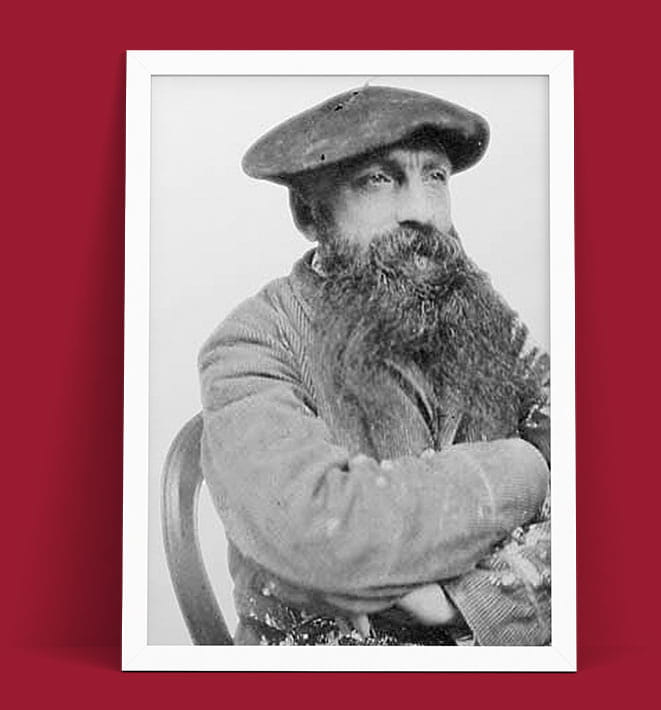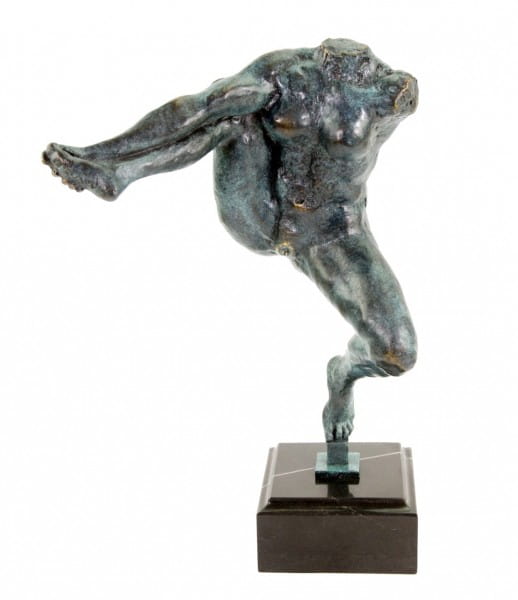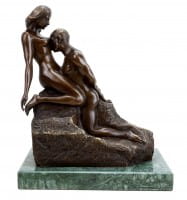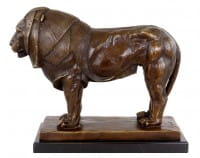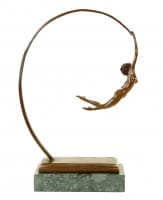Prices incl. VAT, free shipping worldwide
Ready to ship today,
Delivery time appr. 3-6 workdays










Product description
"Bronze Statue - Rodin Sculpture Iris "
| Height | 31 cm |
| Width | 16 cm |
| Length | 15 cm |
| Weight | 3,8 kg |
Auguste Rodin – Iris Messenger of the Gods in Bronze - Signed
The Rodin Sculpture Iris titled Iris Messenger of the Gods embodies a daring vision of motion and celestial grace. Conceived between 1890 and 1891, this breathtaking figure was initially part of a larger concept for a Victor Hugo monument in which a winged Iris soared through space. As the project evolved, the dynamic form gained its own life, becoming a celebrated independent Rodin Statue. Among all Auguste Rodin Artwork, it remains one of the most radical explorations of physical energy and mythological symbolism.
Life of Auguste Rodin
Born on 12 November 1840 in Paris, Auguste Rodin grew up in a modest family; his father served as a police clerk and his mother encouraged his early interest in drawing. Repeatedly rejected by the École des Beaux-Arts, he pursued studies at the Petite École, where he refined his understanding of anatomy and expressive form. These formative years shaped the sculptor who would later redefine modern art with each Rodin Sculpture. His relentless dedication and innovative eye earned him recognition as one of the greatest creators of the modern era.
Creation and Inspiration
The Iris figure emerged while Rodin was developing designs for a monumental tribute to Victor Hugo. He envisioned the messenger of the gods as a celestial presence hovering above the poet. When the monument plan changed, Rodin retained the figure and reimagined it as a stand-alone Rodin Sculpture Iris, transforming classical mythology into a modern celebration of movement. The absence of head and limbs is intentional, drawing the viewer’s focus to the powerful twist of the torso and the lyrical balance of the remaining leg.
Form and Symbolism
In Greek mythology, Iris serves as the link between heaven and earth, a divine courier moving at extraordinary speed. Rodin translated this idea into a fragment of pure motion, free of decorative wings or drapery. The taut muscles, the extended leg, and the sense of weightless suspension create a visual dialogue between human strength and ethereal flight. This Rodin Statue fuses myth and modernity, demonstrating how Auguste Rodin Artwork could break academic boundaries while honoring timeless themes of transformation.
Exhibitions and Collections
Today, casts of Iris Messenger of the Gods can be admired in the Musée Rodin in Paris, the Victoria and Albert Museum in London, and the Metropolitan Museum of Art in New York. Each institution showcases this exceptional Rodin Sculpture, allowing visitors to experience its dynamic energy firsthand. Whether displayed in the soft light of Paris or in the grand halls of New York, the piece continues to inspire awe and remains a highlight of any exhibition of Auguste Rodin Artwork.
Legacy of a Revolutionary Sculptor
Throughout his life, Auguste Rodin challenged the conventions of academic art, emphasizing the expressive potential of the human form. From his early struggles to his international acclaim, he never ceased to experiment with movement and emotion. The Rodin Sculpture Iris stands as a testament to his fearless innovation, a work that captures the eternal dance between the mortal and the divine. In this singular Rodin Statue, the spirit of myth is reborn through bronze, ensuring that Rodin’s genius continues to resonate across generations.
Our advantages
free shipping
Worldwide free shipping
14 days money back
You can cancel your order
within 14 days
secure payment services
Paypal, Master Card, Visa, American Express and more

